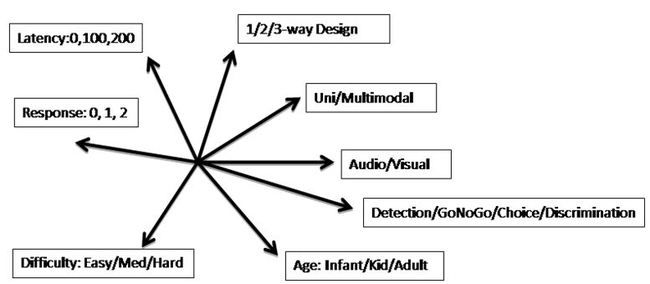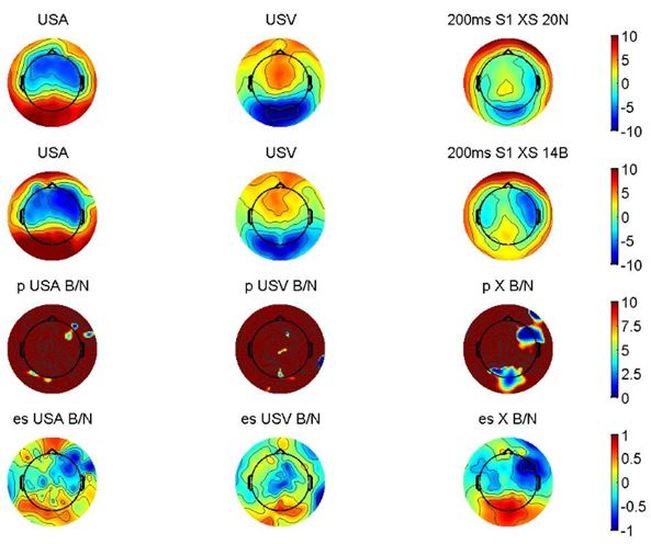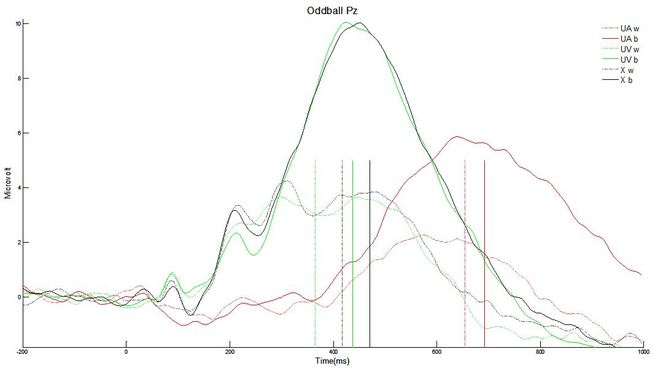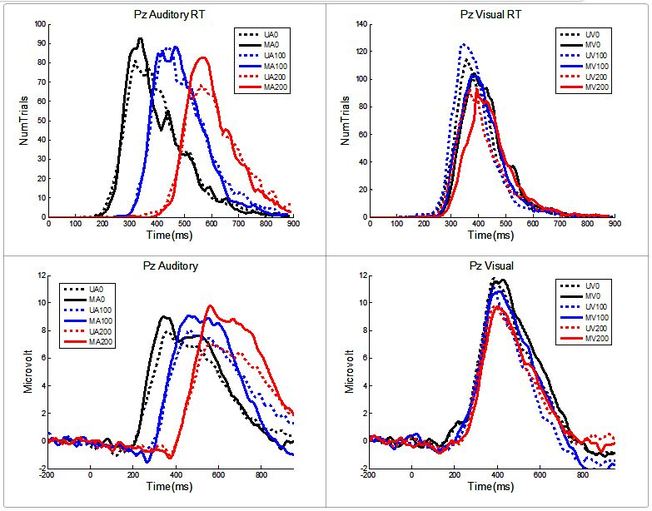Multisensory processing and learning in cognitive development
Auditory dominance in developing children using EEG
Chasing multi-sensory (Audio / Visual) overshadow and interference turned out to be more evasive than thought. We uncovered some functionality that impacted the end result of our experiments and could explain many of the differences among researcher within and across experimental modalities. The variables that affect results one way or another are summarized below

Multisensory Repeat match in children, an EEG study
At the cognitive development lab, I researched, with Dr. Vladimir Sloutsky, multi-sensory processing in children and dominance effect. We conducted a multi-sensory repeat match experiment in children using Electroencephalography (EEG) brain recording ideal for its excellent temporal resolution and ease of setup and comfort. We found that many normal and developing six year old children, when presented with novel visual stimuli together with an auditory one in an immediate recognition task, tend to miss the visual change completely. Their brain patterns, at least early components, are different.
Top row: 20 Normal children scalp map average at 200 ms for stimulus 1, standards
U: Unimodal, X: Crossmodal, S: Standards, A: Auditory, V: Visual.
2nd row: 14 developing children who missed visual component changing in the multisensory stimuli.
3rd row: significance test between 2 groups of children
4th row: effect sizes between 2 groups.
U: Unimodal, X: Crossmodal, S: Standards, A: Auditory, V: Visual.
2nd row: 14 developing children who missed visual component changing in the multisensory stimuli.
3rd row: significance test between 2 groups of children
4th row: effect sizes between 2 groups.

Categorization of object in children, an EEG study
U: Unimodal; X: Crossmodal
A: Auditory; V: Visual
w: within; b: between
A: Auditory; V: Visual
w: within; b: between

Asynchrony between modalities
Reaction time for good trials at Pz top plots for Auditory(0, 100, and 200ms asynchrony) , left, and visual on right.
Bottom: ERP at Pz.
U: Unimodal; M: Multimodal;
V: Visual; A: Auditory
Bottom: ERP at Pz.
U: Unimodal; M: Multimodal;
V: Visual; A: Auditory

Mismatch Negativity(MMN) as a predictor of autistic condition in infants and children
MMN differences for normal children and infants versus those with autistic conditions.
